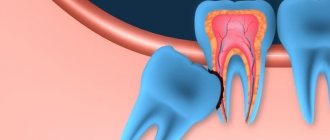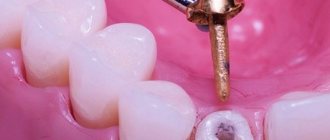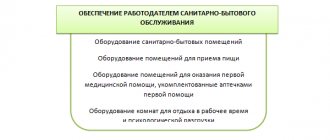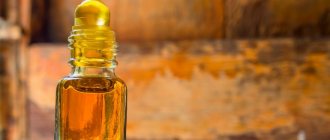Types of burns of ENT organs
Like any others, they are divided according to severity - from the first with minor damage to the severe fourth, up to tissue necrosis. The nature of the injuries depends on the temperature and concentration of the substance, as well as the time of contact with it.
Depending on the injured area, damage can be external, internal or combined. In the first case, the skin of the outer ear and wings of the nose is affected. In case of internal lesions, the nasopharynx, trachea, throat and larynx, and auditory canal are affected.
Taking into account the source, thermal and chemical injuries are distinguished. In the first case, the cause is contact with open fire, boiling water, hot oil, hot metal, etc. Chemical burns are more common. They occur if you swallow an acid or alkali, or inhale their vapors. They occur upon contact with aggressive household chemicals, vinegar essence, and ammonia.
Publications in the media
Chemical burns of the esophagus are caused by concentrated alkalis and acids. Causes. Accidental or deliberate (with suicidal intent) ingestion of concentrated acids (acetic essence, battery electrolyte) or alkalis (ammonia, caustic soda).
Pathogenesis • Local action •• Acids cause coagulative necrosis with the formation of a dense scab, which prevents the substance from penetrating deeper and reduces its penetration into the blood •• Alkalies cause liquefaction necrosis, which promotes the transfer and spread of alkali to the underlying initially undamaged tissues • General toxic effect with the development of multiple organ failure ( primarily hepatic-renal).
Pathological anatomy • Alkali burns are characterized by deeper and more widespread damage to the wall of the esophagus • The most pronounced changes occur in places of physiological narrowing • Stages of the burn •• I - hyperemia and edema of the mucous membrane •• II - necrosis and ulceration of the mucous membrane •• III - formation of granulation tissue •• IV - scarring • By the end of the first week, necrotic areas are rejected, forming ulcerations. Superficial ulcers epithelialize within 1–2 months, deep ulcers within 2–6 months with the formation of connective tissue.
Clinical picture • Stage I (acute) - 5–10 days •• Pain in the mouth, pharynx, behind the sternum, in the epigastric region •• Hypersalivation •• Dysphagia •• Shock in the immediate hours after injury •• Burn toxemia, the symptoms of which begin prevail in a few hours • Stage II (imaginary well-being) - 7–30 days. As a result of the rejection of necrotic tissue, swallowing becomes somewhat freer. Complications: •• esophageal bleeding •• perforation of the esophageal wall •• sepsis • Stage III (stricture formation) - from 2 to 6 months, sometimes for years. On the wall of the esophagus, areas of varying length are formed with a sluggish healing process, the wound surfaces are covered with scabs and bleed easily. Dysphagia to the extent of complete obstruction of the esophagus; laryngospasm, cough, suffocation caused by food entering the respiratory tract.
TREATMENT Diet. Liquid, tube and parenteral nutrition are recommended. Conservative treatment • Narcotic analgesics - trimeperidine, omnopon • Washing the oral cavity and stomach with solutions of antidotes in the first hours after the chemical enters the esophagus • Drinking plenty of fluids (water, milk) followed by inducing vomiting as first aid at the scene • Mandatory early (in the first hours) gastric lavage (fluid volume from 1 to 5 liters depending on age) • Intensive antishock therapy • Antihistamines with a pronounced sedative effect (promethazine, chloropyramine) • Detoxification therapy • With the development of acute renal failure - extracorporeal blood purification • Infusion therapy with forced diuresis, antibiotic therapy • GK • Fish oil, vegetable oil orally • Early start (2 months after the burn) of bougienage of the esophagus for 1–1.5 months in combination with GK and lidase • At the stage of stricture formation, bougienage is the main method of treatment • • Blind •• Hollow radiopaque bougies over a metal guide •• Under the control of an esophagoscope •• Based on the principle of bougienage without end (bougienage with a sequential increase in the diameter of the bougies during one procedure using a gastrostomy - the bougies are passed through the oral cavity, esophagus and gastrostomy) •• Retrograde (through gastrostomy tube).
Surgical treatment • For segmental strictures - partial plasty of the esophagus • For extensive strictures - total plasty of the esophagus with presternal or intrasternal placement of a graft from the small or large intestine. Complications • Cicatricial narrowing of the esophagus • Intravascular hemolysis in burns with vinegar essence • Aspiration pneumonia • Psychosis • Sepsis.
ICD-10 • T28.6 Chemical burn of the esophagus
What is the danger
- If the mucous membranes of the throat or nose are affected, there is a high probability of swelling. It spreads quickly and makes breathing difficult. Up to the point of suffocation.
- When ingested or inhaled vapors of acids and alkalis, damage to the nasopharynx and throat is usually combined with deeper damage to the trachea, esophagus and other internal organs. Necrosis of esophageal tissue and perforation are possible.
- External burns cause intoxication and take a long time to heal without proper treatment. The wound surface becomes infected.
- If the lesions are strong and extensive, a painful shock occurs.
Alkalis
Unfortunately, alkalis are tasteless and practically odorless, which makes their accidental use more likely. Burns of the oral cavity are typical for the use of alkali, but their absence in no way indicates the absence of damage to the esophagus; in 25% of cases, in children with no pathology in the oral cavity, severe damage to the esophagus was observed after consuming alkalis. The stomach is affected in 20-25% of cases. When exposed to alkali on the esophageal mucosa, liquefaction necrosis occurs, quickly spreading to the underlying layers until the alkali is neutralized by tissue fluid. Accordingly, the higher the alkali concentration, the deeper the damage it causes, even to the point of perforation. There are three stages of the effect of alkali on the esophagus: the stage of liquefaction necrosis, the stage of repair and the stage of scarring. Reparation begins on day 5-6 and can last up to 2-3 or more weeks. During this phase, the scab is rejected, granulation tissue appears, and re-epithelialization occurs. Massive deposition of collagen in the third phase leads to the formation of scar strictures.
Alarming symptoms
If you have come into contact with a chemical or vapor, you should immediately contact a clinic. Otherwise, the condition will only get worse. There is a high probability of internal damage if:
- Severe, persistent pain appeared in the mouth, throat, and along the esophagus.
- When you swallow, the discomfort intensifies, and you can’t even drink the liquid.
- There is vomiting, especially with blood.
- Profuse salivation began.
- It became difficult to breathe.
- The temperature has risen (due to intoxication).
- Swelling of the mucous membrane.
- The victim is either drowsy or, on the contrary, restless.
- Severe burns of external tissues, blisters.
Treatment and prognosis
The prognosis is largely determined by the amount of damage. Thus, two independent studies carried out in the 70s of the last century showed that with 0-1 degrees of damage, the probability of stricture formation is 0, with 2 degrees it reaches 17-23%, and with 3 degrees - 100%. More recent data also suggest that acute mortality and the rate of stricture formation in stages 1-2a are minimal, burns 2b-3a lead to strictures in 70-100% of cases, and grade 3b is associated with a mortality rate of 65%. The pH of the product also plays an important role; if it is more than 12.5 or less than 2.0, the likelihood of severe damage is very high.
Treatment of caustic lesions of the esophagus is difficult; they are easier to prevent than to treat. First of all, it is necessary to establish the type of caustic agent. At the pre-hospital stage, treatment should be aimed at maintaining vital functions. Previously recommended attempts to neutralize the caustic agent with weak acids (in the case of alkalis) and weak alkalis (in the case of acids) are now considered harmful because increased heat generation from the chemical reaction can further damage the tissue. In addition, the experiment proved that a 3.8% alkali solution affects the mucous and submucosal layer within 10 seconds after administration (a higher concentration of alkali over approximately the same period of time damages the muscle layer), which makes neutralization attempts pointless. The only exception is the use of 200-250 ml of water or milk within 30 minutes of consuming alkali granules, but even then the risk of vomiting must be taken into account. Attempts to “dilute” the acid with water are contraindicated because lead to increased heat generation as a result of a chemical reaction. Emetics are also contraindicated because lead to repeated exposure of the agent to the esophageal mucosa. You can allow the patient to rinse his mouth with water (spitting it out).
It is extremely important to start eating as quickly as possible. Patients with grade 1-2a lesions begin to be fed within the first 24 hours (of course, the food should not be coarse, hot or cold). In patients with more severe damage, observation for 48 hours is necessary to rule out perforation, then feeding can be started cautiously. If the esophagus is damaged at grade 2b-3 during endoscopy, it is reasonable to leave a nasogastric tube for enteral nutrition (but no more than 2 weeks). The same probe can be useful for passing a string to bougienage the resulting strictures of the esophagus. To reduce chest pain (in patients who can take liquids), you can use liquid agents containing anesthetics, for example Almagel A. Despite the fact that there are studies showing a decrease in the formation of post-burn strictures of the esophagus with the use of hormones, they are currently not widely used due to with the risk of developing infectious complications. If hormones are used, their doses vary from 1 to 2 mg/kg per day, and treatment should begin no later than 48 (and preferably 24 hours) after the burn, with gradual withdrawal of the drug over 2 months. Antibiotic therapy with broad-spectrum drugs when using hormones is mandatory. After dilatation of strictures, the use of steroids is justified, as it leads to a decrease in the number of their relapses. Sometimes recommended antisecretory therapy with proton pump blockers and H2 blockers is of questionable effectiveness. We will not dwell on the surgical treatment of this pathology.
First aid for burns of the ears, nose, nasopharynx
If external damage of the first degree occurs, the skin is treated with a special product - ointment or foam. If necessary, you can take a pain reliever. If the damage to the integrity of the skin is more serious, you need to blot the surface with a weak solution of potassium permanganate and apply a dry sterile bandage. Next, seek medical help. The victim should drink more. Opening blisters is strictly prohibited - it will cause infection.
The degree of damage in internal burns is determined only by a doctor. Chemical injuries also require specialist supervision. If you know what caused it, then in the first minutes:
- The effect of alkali is neutralized with a weak solution of acid (1%) - citric, boric or acetic.
- If the cause is contact with acid, use alkali (2% baking soda solution).
- If there is no neutralizing agent, you can use ordinary boiled water for rinsing.
- When the cause is contact with quicklime, it is important to completely eliminate interaction with water. Use any vegetable oil.
- Medical assistance must be received within a maximum of six hours.
Clinic
The clinical picture is dominated by the following symptoms: pain (retrosternal or epigastric), difficulty breathing, drooling, dysphagia, refusal to take fluids, vomiting. The clinical picture does not always predict the degree of damage to the esophagus. One study examining the correlation between the severity of esophagitis and the presence of three symptoms: nausea, drooling and difficulty breathing found that in the absence of all three symptoms, as well as in the presence of only one of them, there was no significant damage to the esophagus, whereas a combination of two symptoms has always been associated with severe damage.
Treatment of burns of ENT organs
Even when it seems that the damage is minor, it is better to see an otolaryngologist. If the injury occurred due to contact with a complex chemical compound or an aggressive cleaning agent, then take the packaging with you. A specialist will study the composition of the substance.
For severe burns, antishock medications are indicated. If breathing is difficult, there is severe swelling, prednisolone or calcium chloride is used.
A tracheostomy is performed to restore breathing.
Medical appointments are conducted by ENT specialists with almost 10 years of experience. At your appointment, you will be treated with affected tissues and mucous membranes, and a pain reliever will be selected. If necessary, they will arrange a consultation with a surgeon or refer you to a hospital. The center is open all week, seven days a week.
Causes of chemical burns
Chemical burns can occur at work, at home, or during suicide attempts. They occur when exposed to the following substances:
- acids (sulfuric, hydrofluoric, hydrochloric, acetic, nitric, etc.);
- alkalis (caustic soda, etc.);
- petrol;
- phosphorus;
- kerosene;
- bitumen;
- salts of heavy metals (zinc chloride, silver nitrate), etc.
The insidiousness of chemical burns lies in the fact that tissue damage occurs before the substance is completely neutralized and eliminated. In this case, acid burns are more favorable, since upon their contact with tissue proteins, a scab is formed, preventing further penetration of acids. Alkalis, unfortunately, have a fat-dissolving effect, so they cause deep burns. Phosphorus causes not only serious local tissue damage, but also severe general poisoning.









